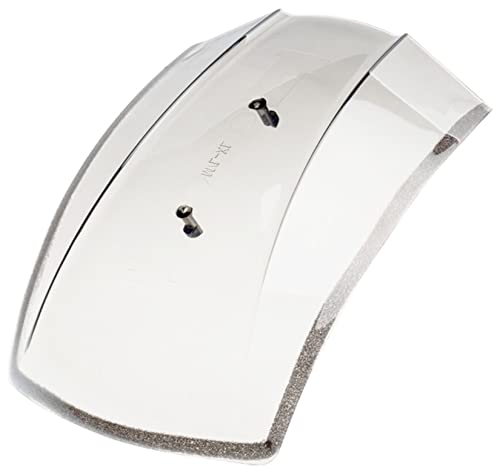Update on project.
It's definitely testing my resolve. Timing and sync losses are at the top of the list, and no matter what I have done to date, I have not been able to hit on the issue(s).
Have learned a bit more about the GR/GL cam sensors and why these are designed this way. Number one - space requirements and secondly, there are two sensors. VR sensor components are:
1 - housing
2 - output wires
4 - permanent magnet
5 - inductive coil
6 - pole pin

All nicely wrapped in a plastic housing - Ns crank sensor shown:

The '85/'86 GW FI models use the above Ns crank sensor but it is quite bulky. I have often asked myself about the reason for the magnet and it is now clear. Honda did a three part GR/GL cam sensor for these FI models mainly because of space constraints and the use of two sensors. The housing for the cam sensors is the brushed aluminum cover:

Question(s) have been asked if the magnet is important and needs to be there - the answer is yes. The manual requires a specific air gap. This is the gap between the pole pin and the trigger wheel not the inductive coil and the trigger wheel. The manual is not very clear about this.
Back to the update. Have been having issues with wiring, getting it correct and using the OEM wiring to do this. Not too easy a task. Timing is a bigger issue. Have not been able to get it consistent. Time to go back to the beginning and start fresh. Shouldn't be such a difficult task this ECU replacement, but it is.
The software that I use to look at data is MegaLogViewer: This a pic of the captured cam/crank info. The green is the cam sensor, blue is crank. Crank signal is very good, but the cam signal has a loss that is very prominent - the signal loss is related to the cam sensor trigger wheel design. There is the tooth spike when the trigger wheel passes the sensor, the next spike - loss of signal occurs because there is a small dimple after the trigger wheel tooth, then the total loss of signal when the cam trigger wheel design moves far enough away from the sensor. The above picture that shows the parts of the cam sensor with the cam sensor trigger wheel, shows the small dimple after the cam wheel trigger tooth. This is causing the sync loss shown in the pic below. The pic below does show that the cam sensor signal is at #1 cylinder after 16 teeth have passed over the crank - Ns sensor.

Thinking about getting rid of the small dimple indent in the cam sensor trigger wheel. Need a product that would emulate the ferrous metal of this wheel, just smooth out the profile, no dip. I do have a spare cam sensor wheel if needs be. Would like a product that I could file away should the need arise. If not, make a new cam sensor trigger wheel. The modified cam trigger wheel could be 1" diameter with a single trigger tooth in the same location as original cam wheel:

I wonder about the cam sensor duration. It does mimic the cam sensor trigger wheel profile, but is quite long approximately 3/4 of a crank rotation. Eight teeth on the crank trigger wheel, so the cam signal lasts for 6 teeth. The next cam pulse is after the crank turns 450 degrees, equivalent to 10 crank trigger wheel teeth. - full engine cycle of 720 degrees.
One of the Speeduino forum members theorized that this small cam sensor signal loss might cause the OEM ECU to generate an error code when the second cam sensor fails. If the ECU sees a cam sensor signal between the pulses shown above (pulse is for a single cam sensor connection), there is no error code generated.
Speeduino forum members have suggested a different trigger wheel. To quote a Speeduino member:"So long as the sensor can "see" it and sends a usable signal, it doesn't much matter the size, shape, symmetry, etc, or even the location. You can find threads here (on the Speeduino forum) where we have used saw-cut slots, drilled holes, pop-rivets, bolt heads and all sorts of other features the sensor could read." Here's a pic of a member made cam sensor trigger wheel:

Have been contemplating making a new wiring harness specifically for the Speeduino ECU. I would still be able to revert back to the original configuration in a day. Would rule out signal loss in the OEM wiring harness. Sometimes harder to use existing than to make new.
Some of what I have learned so far. More to follow.





























































